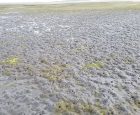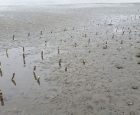
Washington oyster farmers defenseless against pest
March 25, 2020
By
Liza Mayer
Oyster farms in the single largest oyster growing area in the U.S. face an uncertain future after being left with no pest control option to fight an invasive species.
For years, oyster growers in Willapa Bay and Grays Harbor in Southwest Washington state have fought the burrowing shrimp, a pest that destabilizes the seabed and renders it unusable for oyster farming.
“Burrowing shrimp seem to settle in some areas in greater numbers than others, especially near the estuary and river mouths. Unfortunately one of the areas they seem to recruit to are the locations within the estuaries with the greatest productivity and are obviously of the highest value to the farms,” said David Beugli, executive director of the Willapa Grays Harbor Oyster Growers Association.
Growers say imidacloprid is the only practical way of addressing the pest and has shown to be effective as part of a well managed Integrated Pest Management program. But the chemical has also been the subject of contentious debate and public backlash.
The growers recently gave up the fight to have the Washington State Department of Ecology overturn its 2018 decision to ban imidacloprid because they recognized that the fight could be lengthy and expensive.
“It doesn’t take much to understand the futility of trying to fight an agency with apparently bottomless pockets when you are a small family farm group,” said Brian Sheldon, owner of Northern Oyster Co in Ocean Park.
- A shrimp-infested oyster bed
Small farmers are vulnerable
Burrowing shrimp affects most of the farms in the area. But without a way to control them, the smaller farms are more vulnerable.
“The ban is particularly hurtful to smaller farmers because they have limited amount of land available to them and are less vertically integrated. The larger ones will also experience crop shortage but since they have more land available to them, they are able to weather the loss of available growing areas and losses of product better,” said Beugli.
At Northern Oyster Co, Sheldon estimates the farm has lost hundreds of acres to the shrimp over the last four years and could lose more, which would mean reducing plantings and eventually future crops and staff.
“We assess the beds each spring to determine if we can plant seed that season, and we’ve been abandoning beds each year due to shrimp infestation levels. As they infest you lose seed. For the grower it gets to a point where you are losing too much seed, and at that tipping point you are forced to walk away or you lose you investment,” said Sheldon.
Advertisement
For now, the association is trying to secure funding to conduct research on an integrated pest management solution for the problem. The Department of Agriculture has earmarked $650,000 towards burrowing shrimp research in consultation with the departments of Ecology and Natural Resources, and the Willapa-Grays Harbor working group.







